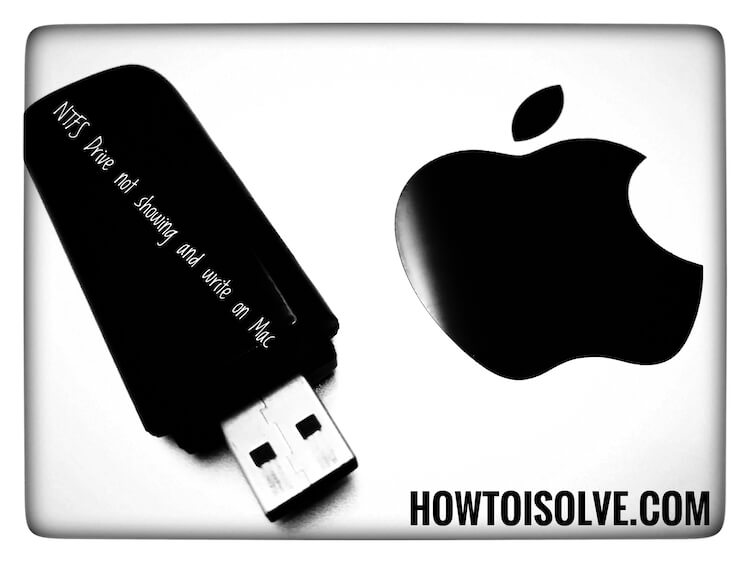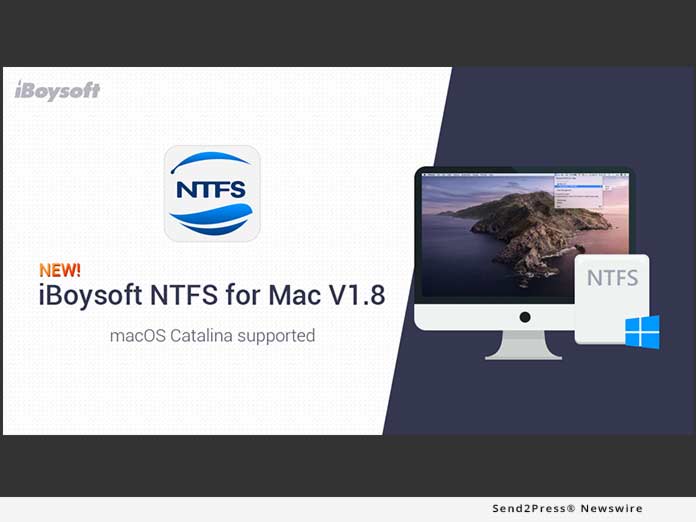On your Mac, select a disk, folder, or file, then choose File Get Info. If the information in Sharing & Permissions isn't visible, click the arrow. If the lock at the bottom right is locked, click it to unlock the Get Info options, then enter an administrator name and password. However, in the case of Mac, there is no specific fix other than unlocking the SD card or disabling the write protection on Mac. Nevertheless, the most crucial aspect to remember is to recover the data from the SD before fixing it. Remo Recover is also available on Mac. IBoysoft NTFS for Mac can enable NTFS write support on Mac automatically after NTFS drives are detected. It supports full read-write support. You can create, save, copy, paste, delete and modify files on NTFS drives on Mac freely. IBoysoft NTFS for Mac has fast NTFS write and file transferring speed. Mounty will not recognize a drive or re-mount read/write even if the drive is NTFS formatted actually. We have seen that certain third-party NTFS tools will re-name the volume kind property of an NTFS drive to something other than 'ntfs'. Convert your NTFS Hard Drive to supported Mac Drive. Part 1: How to write to NTFS External Hard Drive on macOS Mojave. Step #1: Plug the USB drive in Windows and then rename it and give a one-word name to that drive.
A few years ago, mac users could only cried as they neither can write nor read ntfs on mac. Even up until today, it was still very stressful for a new mac user. But the problem seems to be less complicated if you're using 3rd party software. Tuxera 2018 full version is one of many powerful software to enable writing ntfs system on mac. Well it doesn't perfectly doing its job. After all, New Technology File System is not the native system on mac. However, you can rest assured because this program has been going through a lot of revision, yes quite a lot. In the latest update of macos, we knew that Tuxera need sometimes to adjust their software.
You can try and download tuxera ntfs for mac crack as an unlimited free trial. So you can copy and paste any kind of file to an external harddrive, flashdisk, usb drive, media card, ssd, and much more directly on your macbook, imac or macos based system.
Why using Tuxera 2018? As you know, there's a lot of software out there with the same features as tuxera. But there is one features that would make tuxera much better than anything. It's simple! There's no need to mount and unmount with tray icon. This software makes you feel that your mac could defaultly read New Technology File System. Moreover, it really fast. Do you want to try this software on your mac? Download tuxera ntfs for mac for a free trial down below.
Tuxera NTFS 2020 Features :
- Works on every single mac device and macos system
- All NTFS versions supported
- You can create NTFS partitions
- Ability to create disk image
- Verify and repair volumes
- Smart caching for high-performance read/write
- Automatic translation of file names
- Native extended attributes
- Mac NTFS write
- Read NTFS on mac
- Included tuxera ntfs for mac crack
- Included tuxera product key activation

System Requirements :
Supported platforms: Mac OS X 10.4 (Tiger), 10.5 (Leopard), 10.6 (Snow Leopard), 10.7 (Lion), 10.8 (Mountain Lion), 10.9 (Mavericks), 10.10 (Yosemite), 10.11 (El Capitan), 10.12 (Sierra) and macOS 10.13 (High Sierra), macOS 10.14 (Mojave), macOS 10.15 (Catalina). Supported hardware: Intel or PowerPC Mac
How to Install Tuxera 2020 Full Version :
- Download Tuxera ntfs full version down below
- Extract file with Winzip for Mac
- If you are using MacOS device, follow the steps below
- But if you're using MacOS High Sierra, you need to disable System Integrity Protection on mac
- Restart Mac, press COMMAND + R to enter the recovery mode
- Go to Menu, Uttilities > Terminal
- Type a command, csrutil disable
- Now follow the steps above to enable allow apps downloaded from anywhere
- open terminal and type sudo spctl –master-disable
- Now you can open preference, click on Security & Privacy
- Enable. Allow Apps Downloaded from Anywhere
Download Tuxera NTFS for Mac Free Full Version MacOS
Installer DMG | GDrive | FileUpload | ZippyShare | MegaNZ
DMG Filesize : 67 MB | No Password
Mac Write To Ntfs Drive
Developers mostly understand the meaning behind environment variable. The case you are here, you probably understand what an environment variable is. However, sometimes for running certain softwares and eliminating a few errors require changing an environment variable. Therefore, this article tells you ways to set environment variable in macOS Catalina.
What is an Environment Variable?
Environment variable is simply a variable with a stored value in operating system. It has a name and a stored value. There are different types of the environment variables, for example, variables storing path to certain libraries or local system settings. An environment variable can also store current working directory or default shell.
Method to set environment variable in macOS Catalina:

System Requirements :
Supported platforms: Mac OS X 10.4 (Tiger), 10.5 (Leopard), 10.6 (Snow Leopard), 10.7 (Lion), 10.8 (Mountain Lion), 10.9 (Mavericks), 10.10 (Yosemite), 10.11 (El Capitan), 10.12 (Sierra) and macOS 10.13 (High Sierra), macOS 10.14 (Mojave), macOS 10.15 (Catalina). Supported hardware: Intel or PowerPC Mac
How to Install Tuxera 2020 Full Version :
- Download Tuxera ntfs full version down below
- Extract file with Winzip for Mac
- If you are using MacOS device, follow the steps below
- But if you're using MacOS High Sierra, you need to disable System Integrity Protection on mac
- Restart Mac, press COMMAND + R to enter the recovery mode
- Go to Menu, Uttilities > Terminal
- Type a command, csrutil disable
- Now follow the steps above to enable allow apps downloaded from anywhere
- open terminal and type sudo spctl –master-disable
- Now you can open preference, click on Security & Privacy
- Enable. Allow Apps Downloaded from Anywhere
Download Tuxera NTFS for Mac Free Full Version MacOS
Installer DMG | GDrive | FileUpload | ZippyShare | MegaNZ
DMG Filesize : 67 MB | No Password
Mac Write To Ntfs Drive
Developers mostly understand the meaning behind environment variable. The case you are here, you probably understand what an environment variable is. However, sometimes for running certain softwares and eliminating a few errors require changing an environment variable. Therefore, this article tells you ways to set environment variable in macOS Catalina.
What is an Environment Variable?
Environment variable is simply a variable with a stored value in operating system. It has a name and a stored value. There are different types of the environment variables, for example, variables storing path to certain libraries or local system settings. An environment variable can also store current working directory or default shell.
Method to set environment variable in macOS Catalina:
In order to set environment variable, we only need one application. Terminal is the utility which we are going to use. First of all, let's enlist the already available environment variables. Use the following command in terminal:
If you want to view the value of a variable then use the following command:
Replace the name_of_variable with the variable of which you want to see the value. For example, echo $HOME would return the value of your home path.
Set permanent environment variable in macOS Catalina
Now, you know the environment variables in use. Also you know the method to read the value of those variables. Let's learn how to change value of an environment variable permanently in Catalina. If you echo the value of Shell in Catalina, you'd see that you are using ZSH instead of Bash as compared with the previous versions of macOS. Use the following command to edit the zshenv configuration.
Using the following syntax, add the custom value of any environment variable in the file. For example, I am adding HOME variable value like below:
After writing your variable value change command using the syntax shown above; press CTRL+X and press Y to save the file.
Run echo command to be sure about the updated value of the environment variable. This was the method to permanently change the value of any environment variable in Catalina.
Set temporary environment variable in macOS Catalina
If you don't want to set a permanent value of the environment variable in your macOS Catalina, then there is another method. You need to use the following command in the terminal to change the value of any variable. Here I am changing the value of $HOME variable temporarily.
The colon sign appends the new value of the variable which is defined after the equals to sign.
Read Write Ntfs On Mac
Conclusion:
How To Write Ntfs On Mac Catalina Os
This is how you can set a non-persistent or persistent environment variable in Mac OS Catalina. On the contrary, if you want to do the same in Linux then read: How to set environment variables in Linux. Surprisingly, the executable commands are the same.

